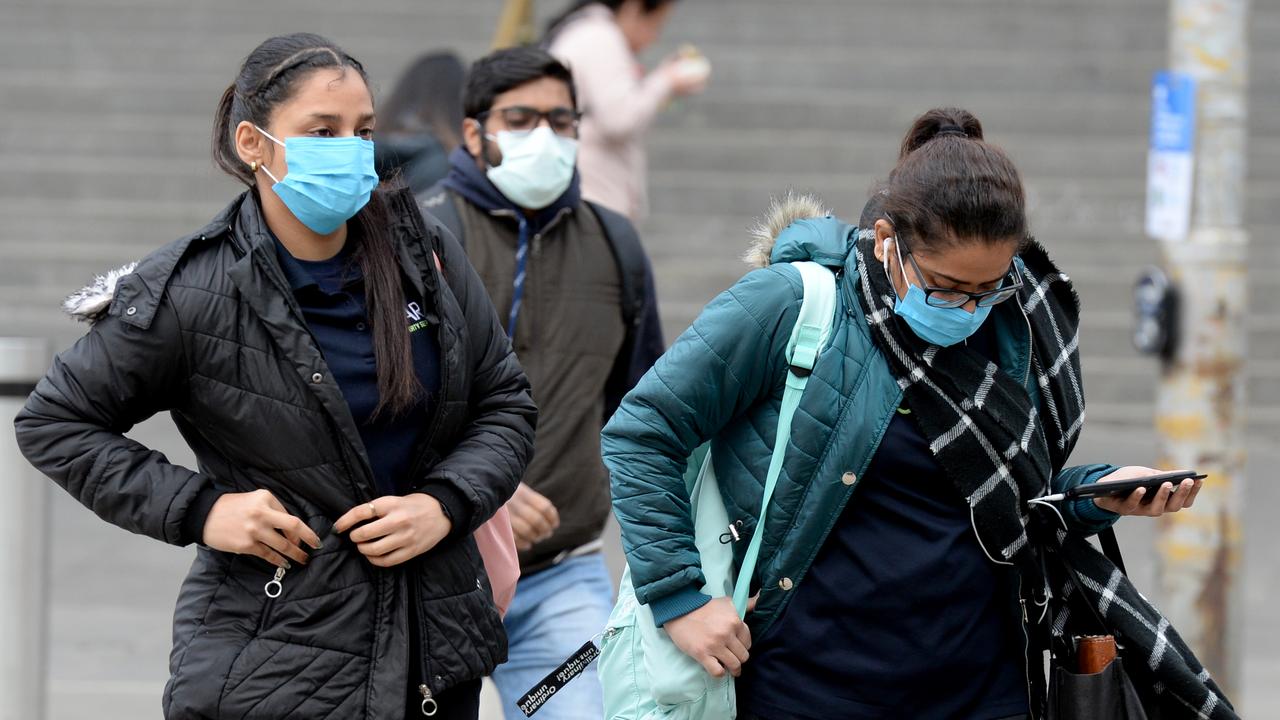Three separate epidemics may be driving Victoria’s coronavirus cases
Victoria’s COVID-19 cases aren’t dropping and one expert believes it’s because there are actually three separate issues playing out.
Victoria may be dealing with three separate epidemics within the state and this could be what’s keeping coronavirus case numbers at a high level.
Today, another 374 new cases were identified, with numbers remaining over 200 each day for the past week, including one day with a record high number of 428 new cases.
Victoria’s chief health officer Brett Sutton acknowledged the “rollercoaster of numbers” but suggested there had been some levelling of cases in the last four or five days.
“I know the day to day changes can be substantial but the modelling of a couple of weeks ago, if we had been on an exponential curve — which is what happens with coronavirus — we would have been at thousands of cases at this point in time, and we’re not, we’re at 374,” he said.
“I’m not satisfied with that but it’s much better than 3000.”
Melbourne University epidemiologist Professor Tony Blakely agreed that people shouldn’t focus too much on the daily case number but even looking at the three-day average “it doesn’t look that good”.
Prof Blakely believes one of the reasons why the numbers are not coming down despite metropolitan Melbourne and Mitchell Shire being in lockdown for almost two weeks, is because there may actually be three separate epidemics playing out.
He said the first epidemic centred around the first 12 postcodes that were locked down earlier than the rest of Melbourne and numbers in those areas should already be going down.
But case numbers in other suburbs around Melbourne, which were locked down later, may still be going up and were acting as a second epidemic.
Prof Blakely also has a theory there is a third epidemic circulating and this could be among essential workers such as tradies and those working in nursing homes, which was also moving the virus around the community.
RELATED: PM reveals how much JobKeeper will be cut
RELATED: State’s first virus case in months

“If you draw these three curves, the joint effect could be this tabletop mountain shape, which is a quite long flat top,” he told news.com.au.
Prof Blakely believes these infections are happening out of sequence and are spiking at different times, which has made the peak of the Victoria’s cases appear long and flat rather than falling sharply.
Authorities confirmed today there had been stabilisation of case numbers in some postcodes, especially those that had been under restrictions for a longer period of time.
Today, Prof Sutton said community cases were decreasing because of restrictions on household visitors and gatherings.
There had also been a decrease in new cases in public housing towers in Melbourne.
It’s hoped that cases in other areas of Melbourne, where restrictions were put in place later, will see some levelling off and decrease.
“So there’s a mixed bag of good and bad news with postcodes and with different setting in Victoria,” Prof Sutton said.
“But I do have some hope that masks, as a kind of universal element that we can apply here, will be a really significant difference in the transmission risk.”
RELATED: Follow our live coronavirus coverage
RELATED: Mandatory masks may stop Victoria heading to stage 4
Prof Blakely agrees that mask wearing, particularly among essential workers, could make a difference and start driving down case numbers.
He welcomed comments last week that a review of businesses would be done to identify workplaces that were generating excessive cases and which may see them targeted for more restrictions.
“I do wonder if it’s going to be construction … that as well as keeping the economy kicking along, is also spreading the virus,” Prof Blakely said.
If infections were being spread within certain industries then shutting these down, if they were non essential, may help.
While Prof Blakely supports Victoria going into a harder stage 4 lockdown if the state decides to pursue a strategy to try and eliminate the virus, he doesn’t think it would be worth doing this just to get cases down.
“I would only uses a hard lockdown for two reasons, to try and eliminate the virus or if ICU or health services capacity were under threat,” he said.
Introducing a hard lockdown but then opening up the economy again before the virus was eliminated means it would eventually come back, and another lockdown would likely be required.
“The economic impact would be devastating,” Prof Blakely said. “If we went to stage 4 lockdown everything would be closed except pharmacies, GPs and supermarkets. I would not recommend we do this unless we were aiming for elimination.”
Tomorrow marks two weeks since Melbourne’s six-week lockdown and Premier Daniel Andrews said it was too soon to be talking about next steps.
“It’s too early for us to be trying to be definitive about what the third week and the fourth week look like,” he told reporters today.
Although numbers don’t appear to be going down, Mr Andrews said they weren’t seeing exponential growth, with cases doubling and then doubling again every couple of days.
“That’s quite a significant achievement in the first two weeks but of course we have to see those numbers better than what they are now, we have to see that stability maintained and then we need to start driving them down,” he said.




